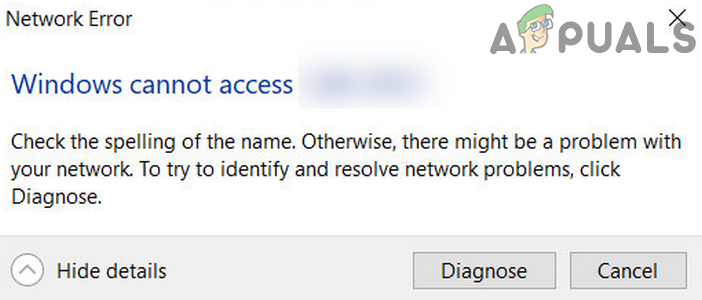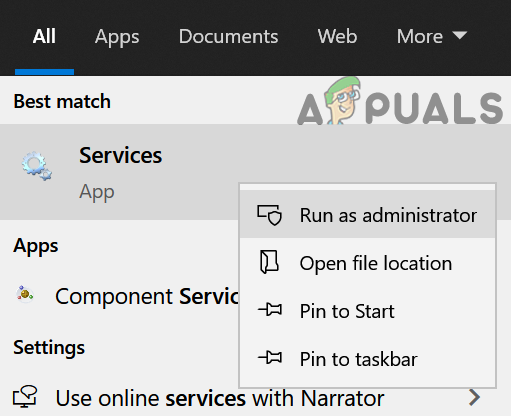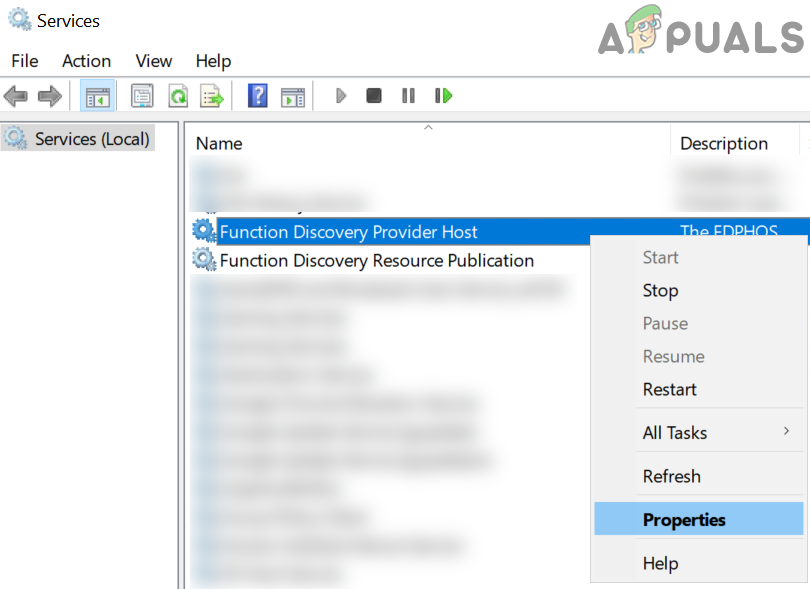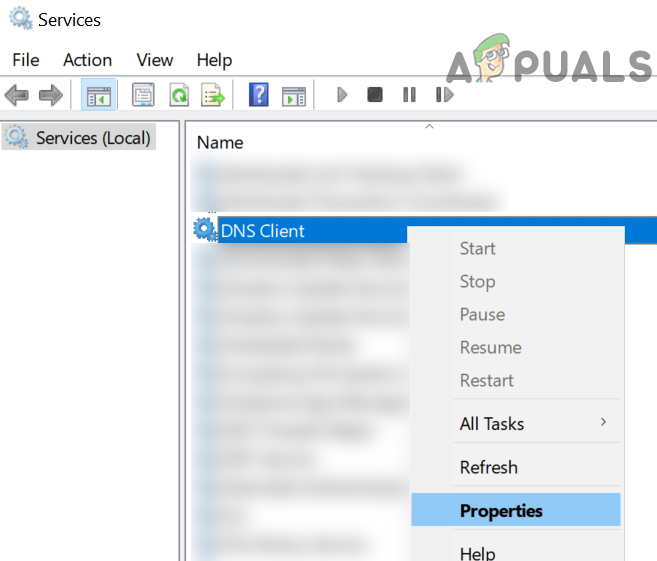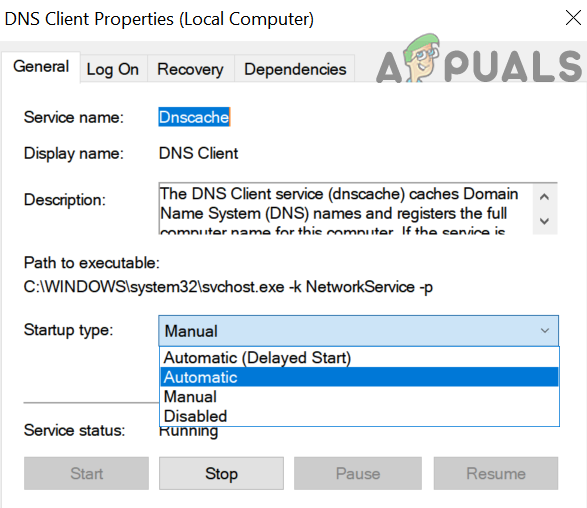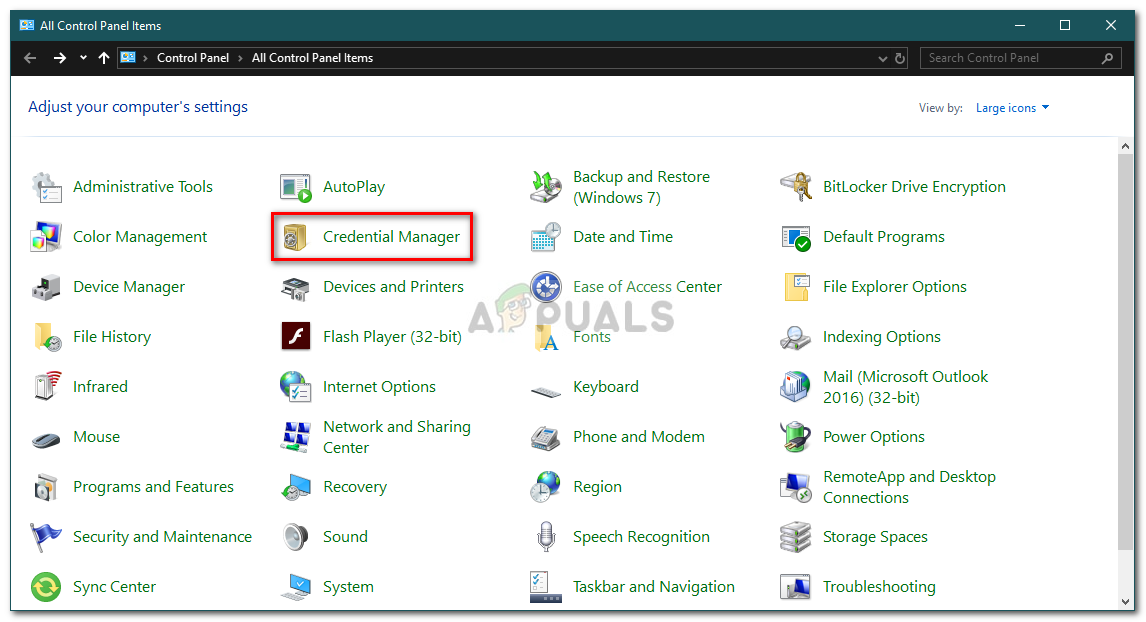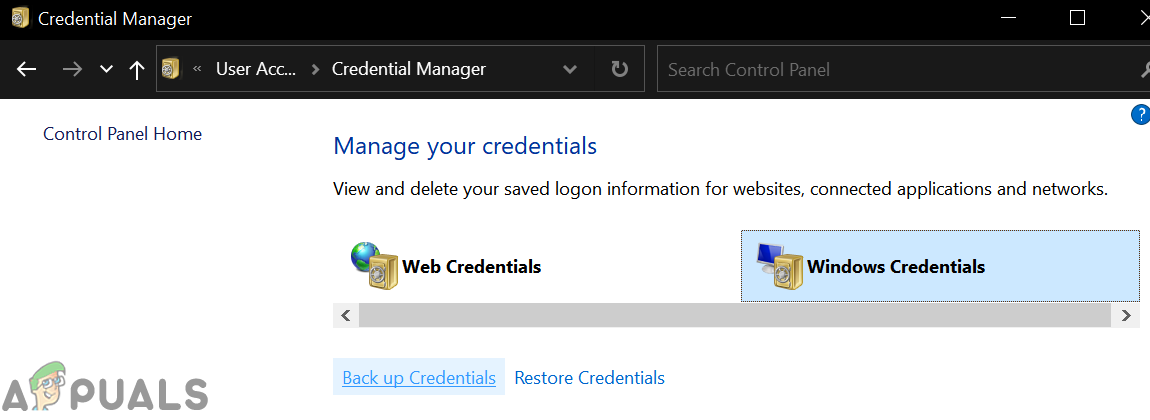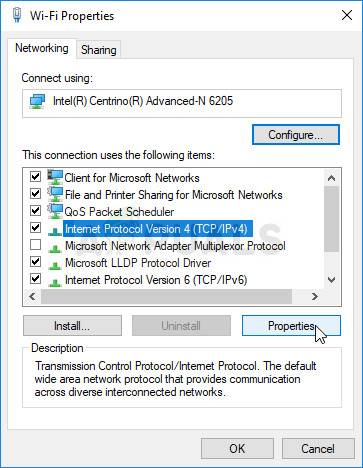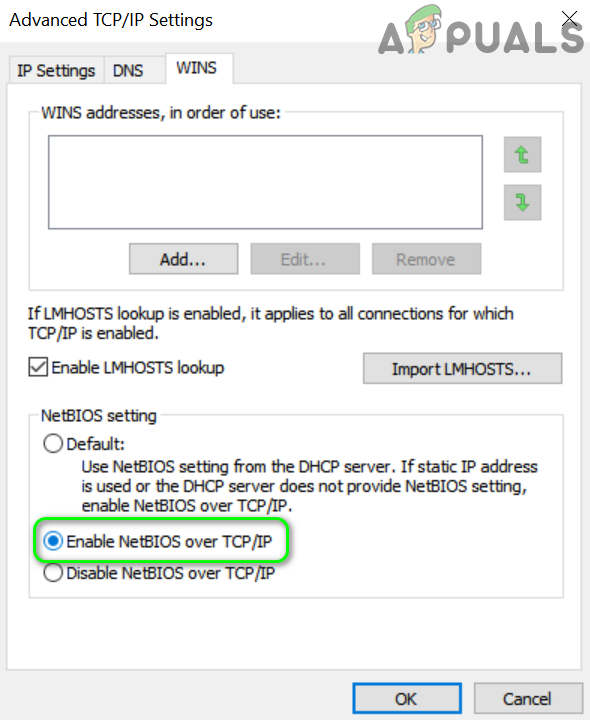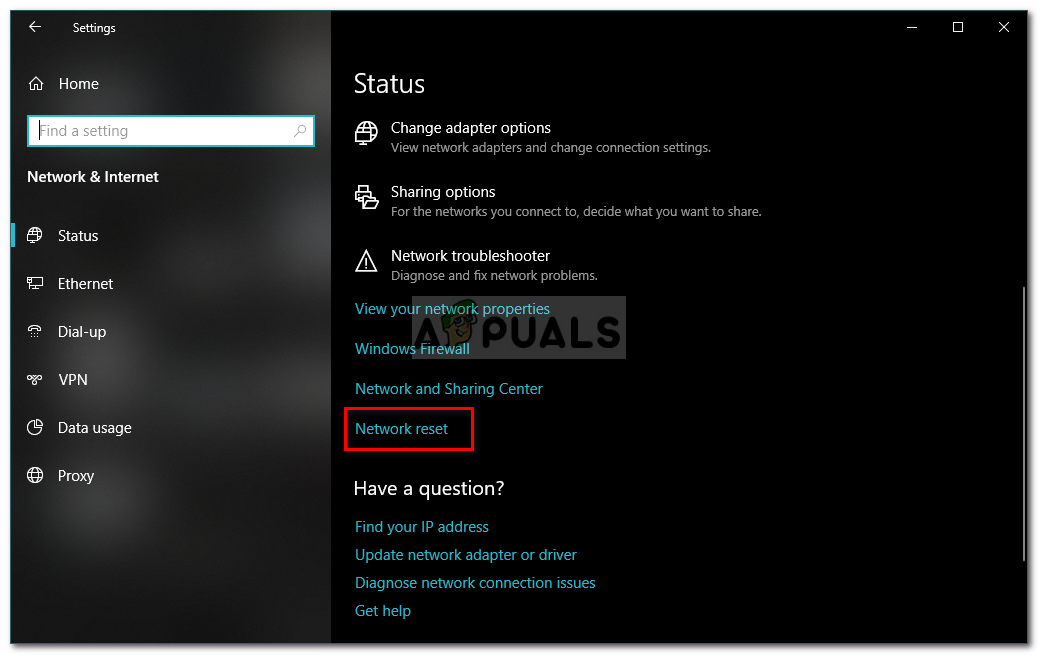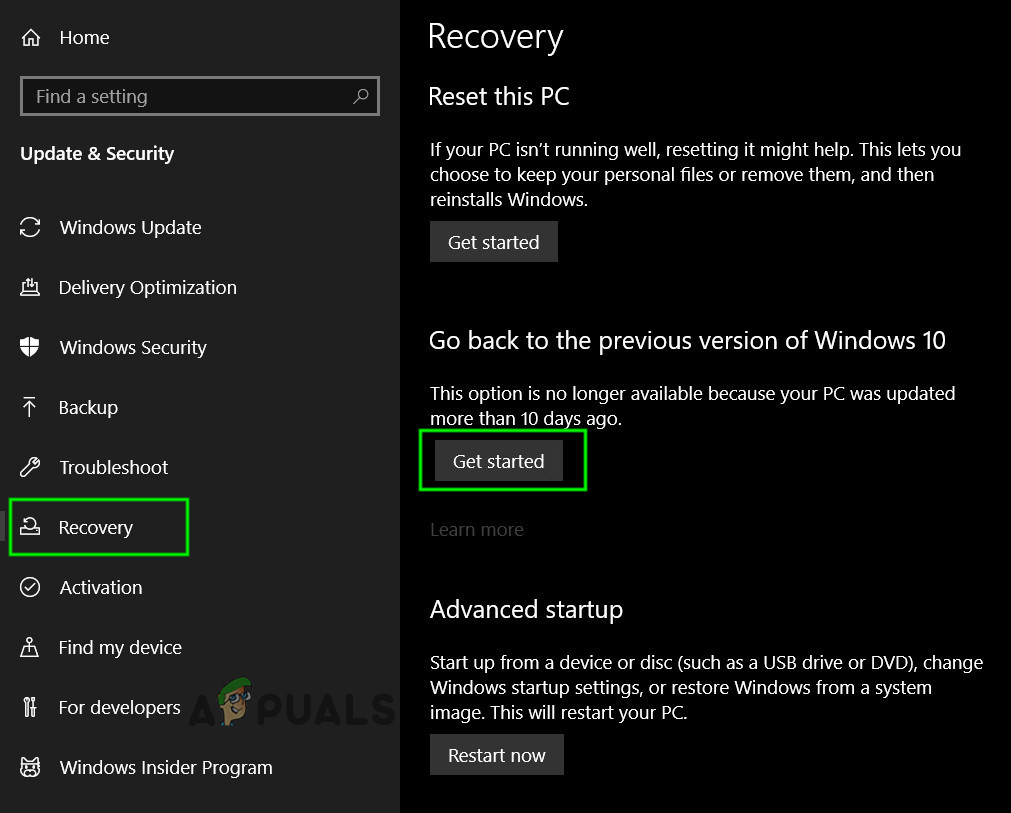The issue arises when the user could not access his network shares/mapped drives after the Windows Update 2004. The issue is reported on the domain as well as on a simple home/office network. Before proceeding with the solutions to fix the network error, make sure “Turn on network discovery” and “Turn on file and printer sharing” are enabled. Also, check if permission for the shares is set to Everyone. Make sure the date & time of both (host and guest) systems is correct. Furthermore, check if your network cable is not damaged. Additionally, uninstall any VPN (disabling will not work). Also, make sure the network type on both systems (host/guest) is set to private. Moreover, try to enable/disable your network adapter to rule out any temporary glitch. Moreover, check if enabling NFS client support (in Turn Windows Features On/Off) solves the problem. Try to disable offline access if using DFS shares. Also, check if restarting the Workstation service solves the issue. Additionally, make sure if the password-protected sharing is disabled for both systems (host & guest). Last but not least have a detailed look at our article on cannot access network share after update 1709 (the methods there are still relevant like enabling insecure guest logons, enable SMB 1.0, etc.).
Solution 1: Enable the Function Discovery Resource Publication and Provider Host Services
The Function Discovery Resource Publication is the networking service responsible for the discovery of devices in a local computer network and publishing of the computer and its attached resources to the network, whereas the Function Discovery Provider Host service is the host process for Function Discovery providers. You may fail to use the network shares if the said services are disabled. In this case, enabling these services may solve the problem.
Solution 2: Enable the DNS Cache of Your System
The Windows OS stores cache files (like web browsers), called Domain Name System (DNS) cache, that contains information about all visited IP addresses, websites, hostnames, and resource records. You may fail to access network shares if the DNS Cache service (described as DNS Client) is disabled (as the system will not able to handle the DNS requests). In this case, enabling the DNS client (DNS cache) service may solve the problem.
Solution 3: Restart the Workstation Service
You can also do the same by executing the following in an elevated Command Prompt:
Solution 4: Add the Credentials of the Host System to the Credential Manager
The SMB sharing issue may arise if the Credential Manager is missing the credential to access the problematic network share. In this context, adding the network-share credentials to the Credential Manager may solve the problem. If the issue is still there, you may use GPO to map the shared drive but during this process, use Create but make sure to uncheck the Reconnect option (you may use the FQDN path). Also, check if enabling the NTLM authentication in the GPO solves the problem.
Solution 5: Delete the Credentials Stored in Windows Credential Manager and Add Back
You may fail to access the network shares if the credentials stored in the Windows Credential Manager are not wrong or corrupt (after a Windows update). In this case, removing the current credentials and then adding them back may solve the problem.
Solution 6: Enable NetBIOS on the Windows 10 Host System
NetBIOS over TCP/IP is the networking protocol to allow legacy computer applications (that are dependent on NetBIOS API) to communicate over the modern TCP/IP networks. If your older systems (XP or Windows 7 machines) could not access the Windows 10 system, then enabling the NetBIOS over TCP/IP may solve the problem.
Solution 7: Reset Network to the Defaults
Any customization to your network settings/adapters or their corruption may stop the network share from working. In this context, resetting the network (which will reinstall your network adapters and set their components back to the default values) may solve the problem.
Solution 8: Re-Enable the SMB Protocols
The issue may arise if the SMB protocol is disabled on your system or your system needs a different protocol version of SMB. In this case, enabling the SMB protocol may solve the problem.
Re-Enable the SMBv1 Protocol in the Windows Features
Re-Enable SMBv1 Protocol Through the PowerShell
Enable the SMBv2 Protocol
Moreover, check if disabling NFS and enabling SMB/CIFS on the host resolves the problem. You can also try Windows Discovery on a Linux server.
Re-enable SMB 2.0 (if already enabled)
You may fail to access the network shares if the SMB client on your system is not configured properly. In this case, enabling (or disabling) the SMB 2.0 client may solve the problem.
Solution 9: Disable AutoDisconnect of the Host System
You may fail to use the network share if the host system (either Windows 10 or another version of Windows) is force disconnecting the guest connections. In this case, disabling the AutoDisconnect feature of the host system may solve the problem.
Solution 10: Edit the System’s Registry
If the sharing issue is still there, then you may edit the system’s registry to allow the SMB sharing to work. Warning: Advance at your own risk and with extreme care as editing the registry of your system is a proficient task and if not done properly, you may cause undying damage to your OS/PC/data. Before proceeding, make sure to back up your system’s registry. Now press the Windows key and search for: Registry Editor. Then, right-click on the result of the Registry Editor, and in the menu shown, open Run as Administrator. Now apply the following edits and check if that resolves the issue.
Create a ProviderFlags Key
Edit the Properties of the LanmanWorkStartion Service
If that did not do the trick, you may try the following: If the issue persists, check if adding the affected user to a local admin group of the PC solves the problem.
Solution 11: Create a Local User Account
The network shares may not work if your user account is corrupt or you are using a Microsoft/Office 365 account (that can create some type of security issues on the shared files). In this scenario, creating a local user account and sharing (or accessing the network share) through that account may solve the problem.
Solution 12: Revert Your System to the older Windows 10 Version
If the issue persists even after trying the above solutions, then reverting your system to the older Windows 10 version when the network shares were working fine may solve the problem. This method can only be applied if you are within 10 days after applying the latest update. You may have to hide the update in the Windows update settings till the issue is resolved. If the issue started to occur after a particular Windows update, then uninstall that update. If none of the solutions was able to solve the issue, try to re-add the system/server to the domain (if the issue is occurring in a domain network). Moreover, keep on checking if Microsoft has issued a hotfix for the issue. Furthermore, check if you can use the IP address or FQDN in the Run command (like \192.169.XX.XX) of the shared folder. Additionally, try to save your Samba server password (if the issue is on a Samba server) in the Windows system. Also, try to use Registry Editor to delete the mapped network (Computer\HKEY_CURRENT_USER\Network\Z where Z is your network share). Delete the entries (a, b, etc.) from the following key: Then remap the drive and add the Registry key of [HKEY_CURRENT_USER\Network\F] “ProviderFlags”=dword:00000001 and check if the issue is resolved. Furthermore, check using DFS Share solves the issue. If the issue is still there, then try using the Net Use command (net use w: “\network name\folder” /persistent:no). If the issue is still there, then the issue could be a result of a corrupt Windows installation. In this case, resetting your system to the factory defaults and if the issue persists, then perform a clean install using version 2004 or higher of the Windows 10 as the bootable image, and hopefully, the network share issue is resolved.
Fix: Cannot Access Network Shares after Update 1709SOLVED: “Unable to initialize audit layer: Permission denied” bug in libvirt-bin…Fix: Audio not working after Windows 10 Version 2004 Update[Fixed] ‘rdr_file_system 0x27’ BSOD after Windows 10 2004 Update
